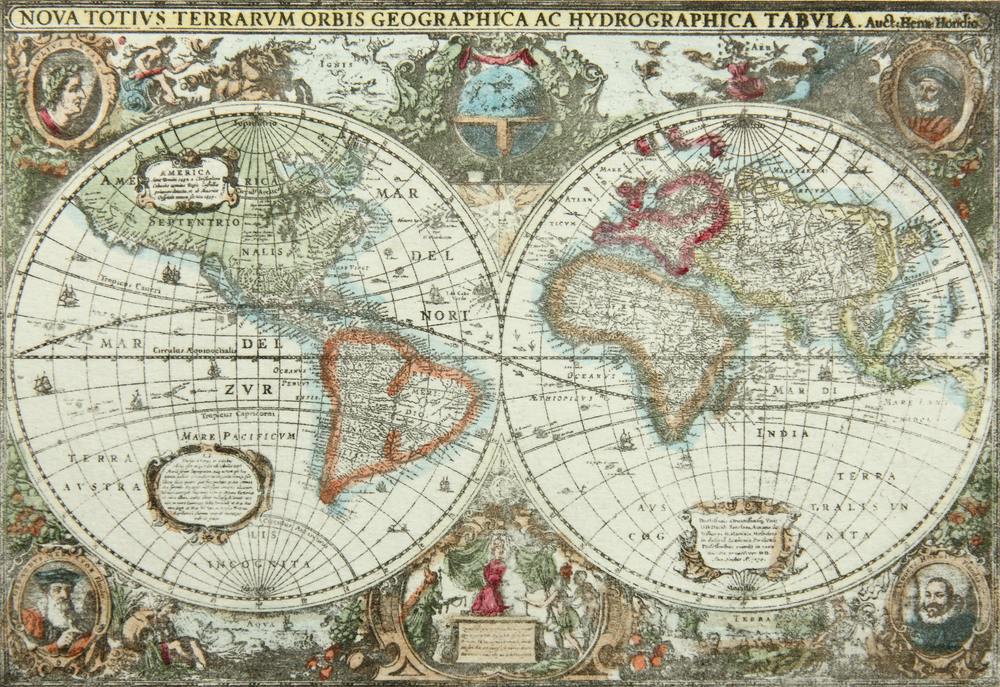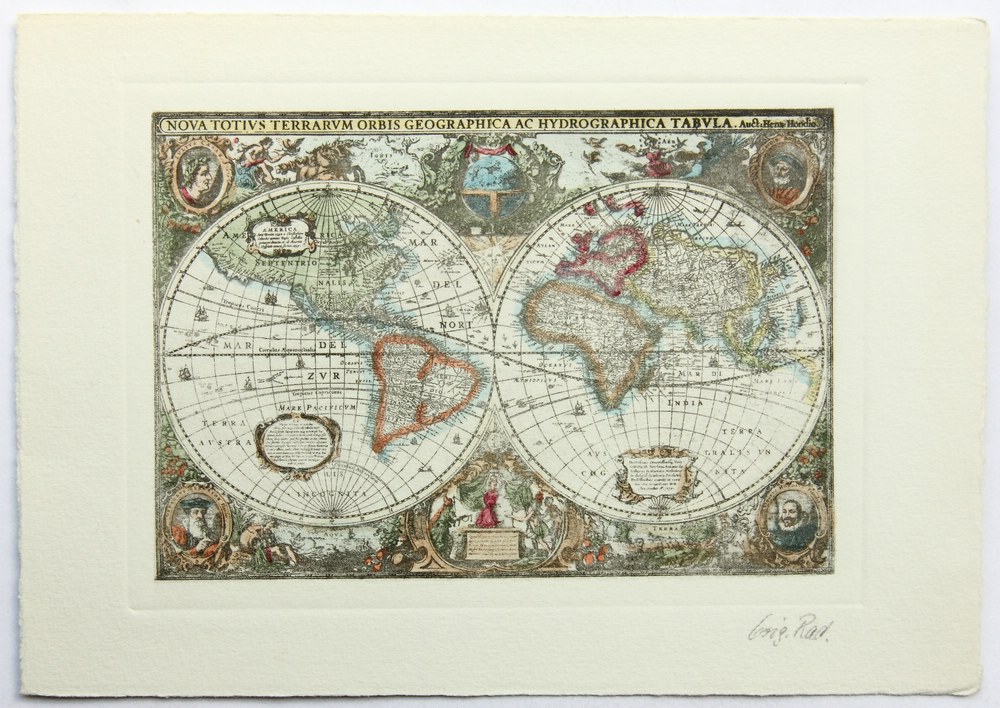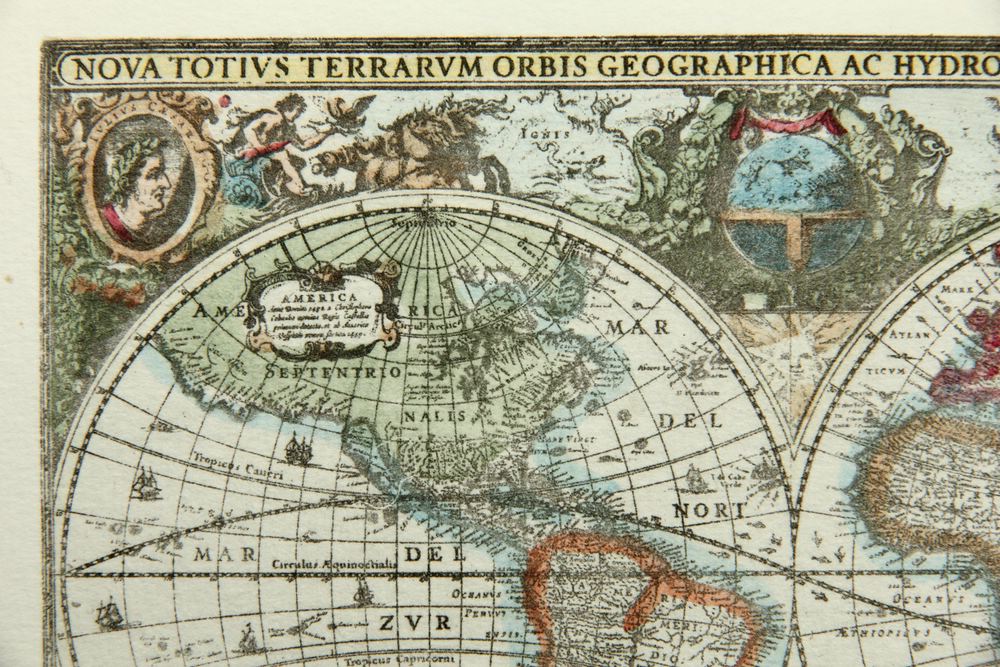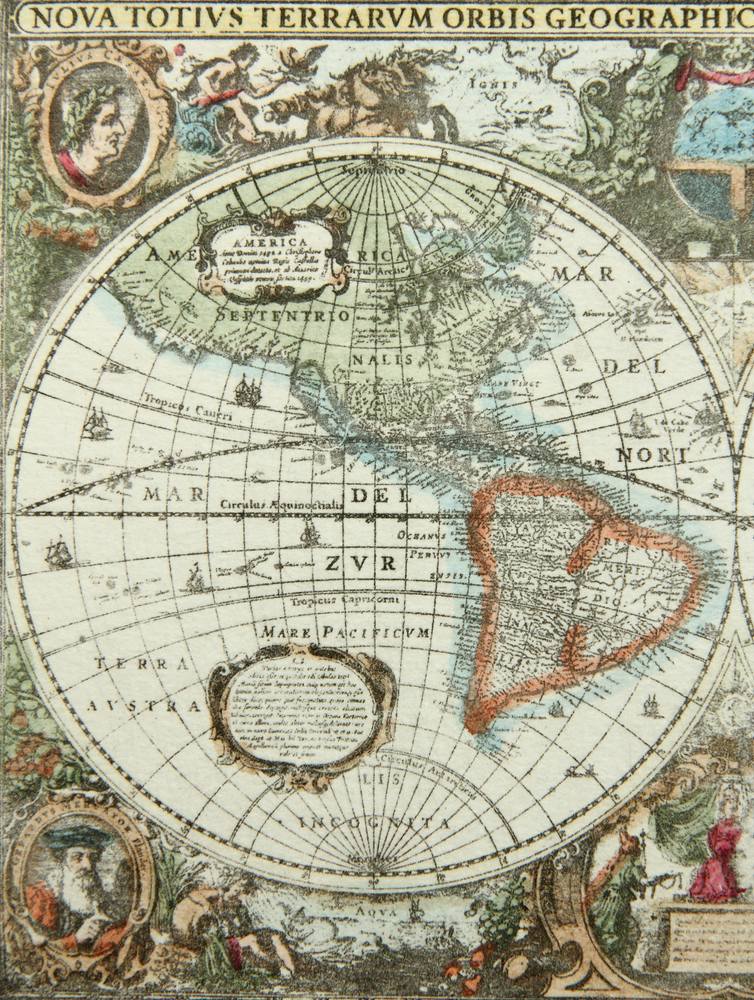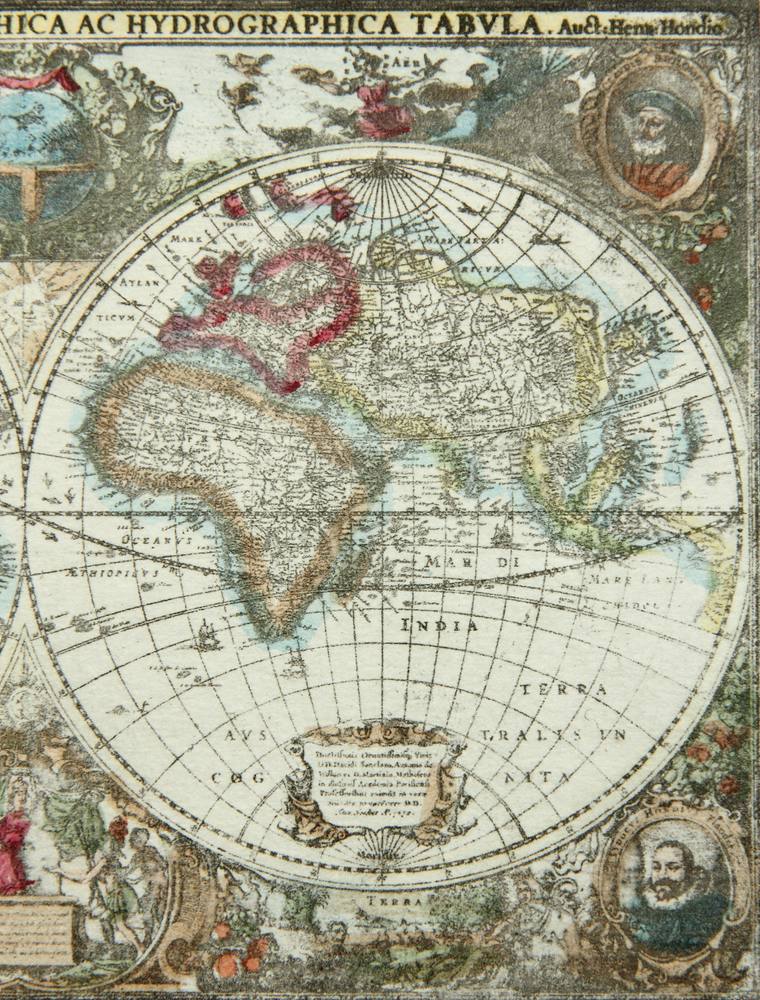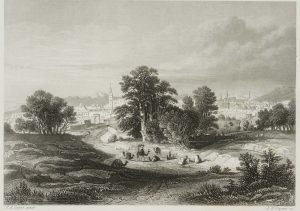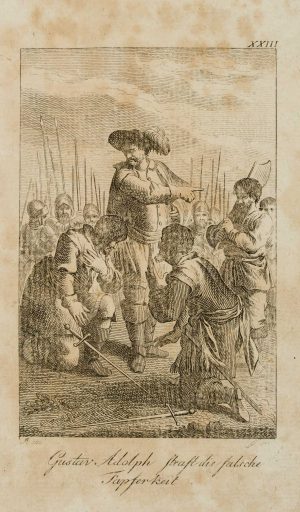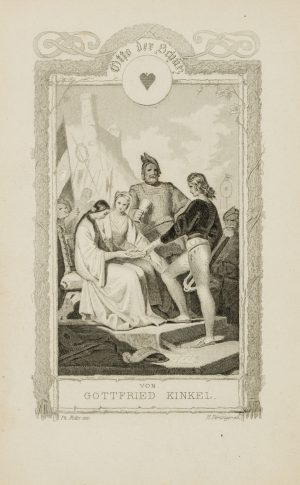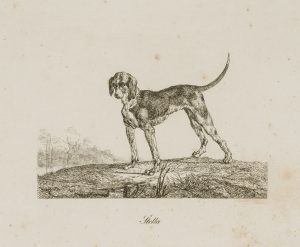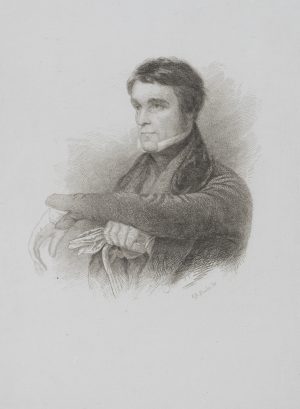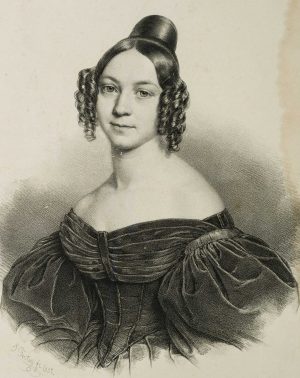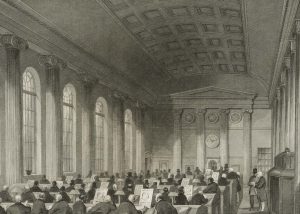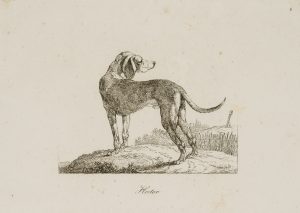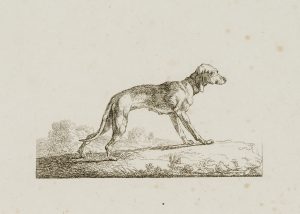Henricus Hondius (um 1615 Den Haag – um 1676 ebd.), Historische Weltkarte “Nova Totius Terrarum Orbis”, , Offsetdruck
- Technik: Offsetdruck auf Papier
- Bezeichnung: Unterhalb der Darstellung in Bleistift bezeichnet mit: „Orig.Rad.“.
- Datierung:
- Beschreibung: Miniaturisierte Weltkarte nach einem niederländischen Original, das um 1641 in Amsterdam entstanden ist. Die Kartographie folgt grundsätzlich der Weltkarte von John Speed. In den Ecken der Darstellung sind die Porträts von Ptolemäus, Mercator, Hondius und Julius Caesar zu sehen.
- Schlagworte: Landkarten, Niederlande, Realismus, 1900-1924
- Größe: 14,8 cm x 21,1 cm, Druckplatte: 11,6 cm x 16,1 cm, Darstellung: 10,2 cm x 14,9 cm
- Zustand: Tadelloser Zustand. Die Blattkanten sind unbeschnitten.
English Version:
Henricus Hondius (around 1615 The Hague – around 1676 ibid.), Historical World Map “Nova Totius Terrarum Orbis, , Offset printing
- Technique: Offset printing on Paper
- Inscription: Inscribed in pencil below the image with: “Orig.Rad.”.
- Date:
- Description: Miniaturized map of the world after a Dutch original made around 1641 in Amsterdam. The cartography basically follows the world map of John Speed.in the corners of the representation are the portraits of Ptolemy, Mercator, Hondius and Julius Caesar.
- Keywords: Realism, Offset, Maps, Netherlands
- Size: 14,8 cm x 21,1 cm (5,8 x 8,3 in), Plate: 11,6 cm x 16,1 cm (4,6 x 6,3 in), Depiction: 10,2 cm x 14,9 cm (4 x 5,9 in)
- Condition: Perfect condition. The edges of the sheets are untrimmed.

